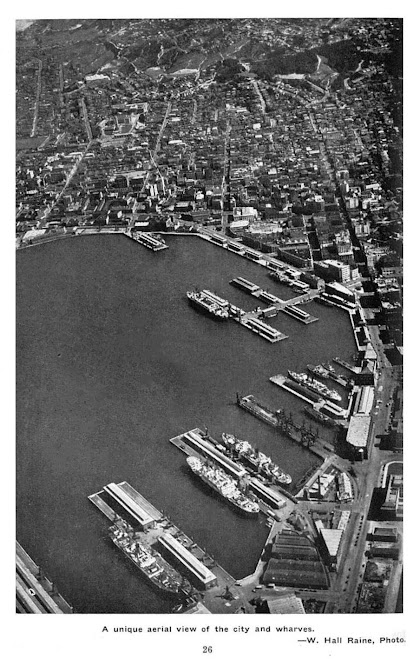Thursday, December 31, 2020
Mobil map cover from the era when a service station was exactly that
Not only would uniformed attendants pump your gas for you, but clean the windshield and check the water and oil too. Circa 1960.
Central Vermont Railway 2-10-4
Wednesday, December 30, 2020
sailing ship 'Pandora' model
Detailed info
Tuesday, December 29, 2020
Thames Trader bus art
Monday, December 28, 2020
trains for Argentina that instead went to the Soviet Union
A Ganz "Catamarca" type set in Isidro Casanova on the Belgrano Sur line in 1958. They were the design basis of the "Rosario".
1953 Ford Comète, France
"Good grief, honey, who produced this useless map?"
This model was made between 1951 and 1954 when Ford SAF was sold to Simca.
Sunday, December 27, 2020
Manning Wardle 0-6-0ST, NSW
Locomotive Windsor, built 1864 and scrapped 1923.
The Blacktown--Richmond line started with 3 Manning Wardle 0-6-0 box-saddle tank engines with builders numbers 88, 89 and 109. Named Windsor, Sydney & Richmond they were built in March 1864, August 1864 and August 1864.
The original concept for the Blacktown--Richmond line was to have horse drawn trains but these locos were ordered instead. They worked the Blacktown--Richmond line until 1879 when it had been upgraded to take bigger power.
Originally Windsor was numbered 15, which was changed to 29 in 1865. Richmond was numbered 16, this was changed very soon to 14 (second). In 1865 it was renumbered again, this time to 31. Sydney was numbered 16 (second), which was changed to 30 in 1865.
After service on the Blacktown-Richmond line 29, Windsor (ex 15) was hired to T. Saywell for his "Rockdale--Lady Robinsons Beach" (Brighton-le-sands) Tramway in 1885. It was returned in 1886 and, in 1891, sold to Mr Saywells "Toronto Tramway". It passed to the Public Works Department in 1900 and was scrapped in 1923. 30 & 31 were used at the opening of the Kogarah-Sans Souci tramway in September-November 1887. 31 was then sold to R. G. Watkins, then to the PWD, then scrapped with No. 29 at Goninans in May 1923.
#29 was sold on 9/1/1891 after running 466,503 km.
#30 was scrapped in 9/1892 after running 547,638 km.
#31 was sold on 28/11/1890 after running 536,716 km.
Saturday, December 26, 2020
Friday, December 25, 2020
Thursday, December 24, 2020
Christmas greeting to our customers and readers
This past year has been a bizarre one with many people in most countries having been compulsorily required to spend some of it in the 'great indoors' because of the advent of a new coronavirus.
It didn't make a whole lot of difference to us as working on publications for people is something we easily do at home. However, it has certainly had a big effect on some retail businesses that depend on casual shoppers and on transport operators, particularly the airlines and cruise ship industry.
Hopefully, the (rushed) vaccine arrivals will mean relative normality in 2021, although some countries such as France are proposing that people must have vaccination certificates to use public transport and some airlines such as Qantas are also threatening that. We hope it doesn't happen, as it is unnecessary and will be a major political issue if it does.
That aside, we wish customers and readers a good holiday break and year 2021.
Wednesday, December 23, 2020
Convair CV-440 Metropolitan model
A 1:50 model in Swissair livery.
The prototype was built in 1956. It had 2 Pratt & Whitney R-2800 Double Wasp engines, seats for 54. It was written off in 1980(?)poster of the first airplane crossing (East-West) of the North Atlantic, September 1930
"It's to France that the world owes its wings."
Wikipedia notes: Dieudonné Costes (14 November 1892 - 18 May 1973) was a French aviator, known of long distance and record breaking flights, a fighter ace of World War I. Over 1-2 September 1930, Costes with Maurice Bellonte, flew their Breguet 19 Super Bidon from Paris to New York, as the first aircraft in the more difficult westbound direction, between North American and European mainlands. They covered 6,200 km in 37 hours 18 minutes (some sources claim 5,850 km).
Tuesday, December 22, 2020
Cardiff trolleybuses, Wales, 1960s
Monday, December 21, 2020
Sunday, December 20, 2020
traffic in Palmerston North square, late 1950s
A coupled pair of Fiat railcars can be seen on the railway line. The Milson deviation saw the removal of the railway tracks circa 1964 and road traffic now is largely confined to the perimeter.
For lots more, see the book New Zealand 1950s Steam in Colour
The Oceanbird: Swedish firm develops large wind-driven cargo ship
Saturday, December 19, 2020
alligators in the desert
Friday, December 18, 2020
Canadian Pacific 2-10-0
"These oil-burning Decapods came out of the Angus shops in four subclasses. They reflected the CP's study of the R2 conversions and were very similar in size and power.
"R3a (2 units in May and June 1917), R3b (1 in August, 3 in September, 1 in January 1918), and R3c (18 units in January to June 1918) all had the same boiler dimensions. The 10 R3d (1 in June, 3 in July, 2 August, and 2 each in January-February 1919) had slightly more firebox area (230 sq ft vs 221).
"The big difference among the sub-classes seems to have been the size of the journal bearings on the driving axle (the 3rd of 5)."
More
Thursday, December 17, 2020
Wednesday, December 16, 2020
above Wellington wharves, 1959
With the substantial demise of coastal shipping and the advent of containerisation in the 1970s, many of these wharves are no longer used by vessels of any significant size, if at all.
For lots more, see our books.

















































